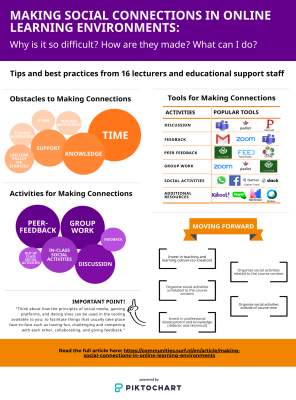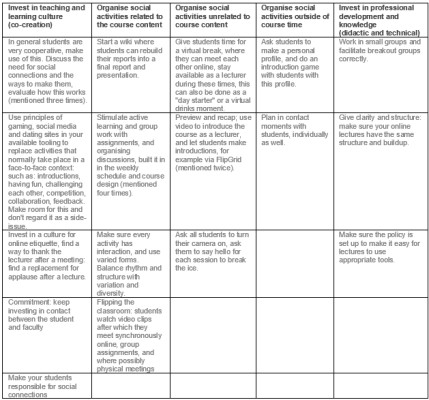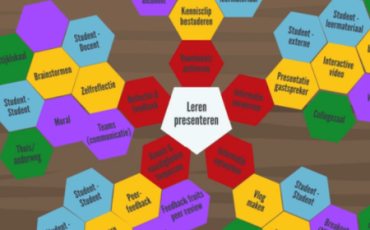Koos Winnips
Youtube: https://www.youtube.com/channel/UCYTvTql8EqcjF798kcyoeMQ Meer over Koos Winnips
Natasa Brouwer (UvA), Peter Dekker (HvA), Koos Winnips (RUG), and Devon Abbey (RUG)
COVID-19 has a huge impact on the teaching and learning process because the physical distance that we have to respect influences how we connect to each other and how we establish social relationships. Social presence is crucial for student involvement and active participation in the learning process (Garrison and Anderson, 2006). During Corona times, online education is often the only solution to resume teaching. It is a welcome solution that allows learning to continue. However, the transition from a traditional or a blended course to a fully online course requires course redesign. In the first lockdown of 2020 this transition had to be done in an extremely short time, sometimes it happened instantly from one day to the next.
Nevertheless, a sufficient sense of belonging and active involvement from students needs to be achieved. This presents a big challenge for lecturers, especially for those who were accustomed to giving their courses face-to-face. Hoping that this period was only temporary, many lecturers mirrored the activities that they always did on the campus to fit the online classroom, but soon many realized that the learning potential of these activities do not translate to the online environment. What should we do now? There is knowledge and experience about it to be shared.
How do lecturers and institutions tackle problems of social connectivity in their online courses? How do they help students connect with each other in an online course during this difficult time? We received answers from 16 professionals (lecturers and support staff) from Dutch higher education institutions (MBO, HBO, WO) on why this is so difficult, how to best make online connections and what actions we can all take to facilitate this in higher education courses. Their answers and tips can be found in the infographic.

In response to the question: “What do you think are bottlenecks to redesigning education to create online social bonding?” the answers were “time”, but also “knowledge” and “not enough support”. Respondents also mentioned that the policy and strategy of their institutions should be more clear and supportive.
Due to the popularity of open online courses and blended learning teaching practices, many online learning activities were already available before the pandemic and were successfully applied with or without some adaptation. In our investigation, peer-feedback was seen as the most promising activity for stimulating social connectivity, especially when accompanied by feedback. Particularly when peer-feedback is combined with online group work and online discussion. When possible, organize in-class social activities to stimulate out of class social activities. We are lucky that this pandemic didn’t come 5 years ago when our digital learning platforms were still developing, now they can host learning activities that promote connectivity, collaboration and other types of peer-to-peer interaction. We also see that more has to be done. A lot still needs to be learned and the tools need to be improved as well.
Moving forward
An analysis of the tips and best practices gave 5 main areas where improvements can be made. These are summarized in the table below:

To improve social connections, three areas are mentioned: activities in courses, professional development and policy. Implementation of these will improve the enjoyment of students and lecturers alike, and increase the quality of learning at the same time.
Youtube: https://www.youtube.com/channel/UCYTvTql8EqcjF798kcyoeMQ Meer over Koos Winnips

0 Praat mee